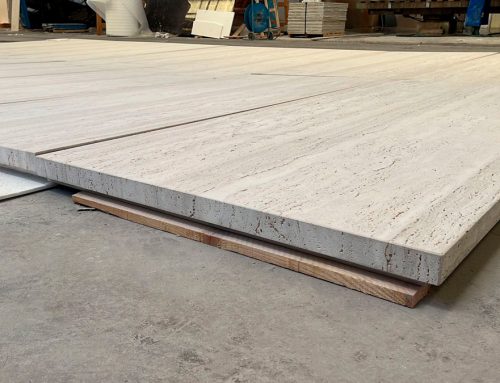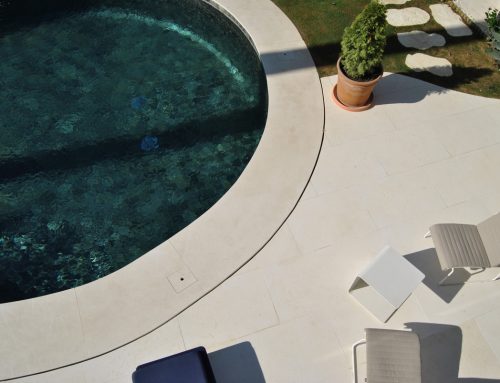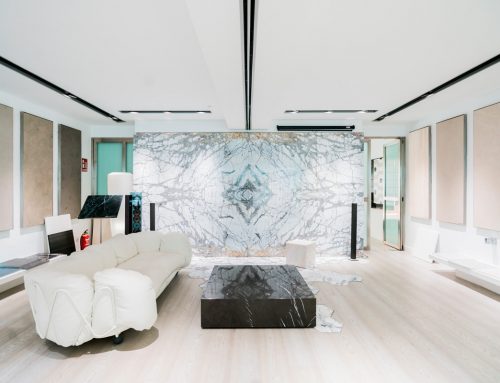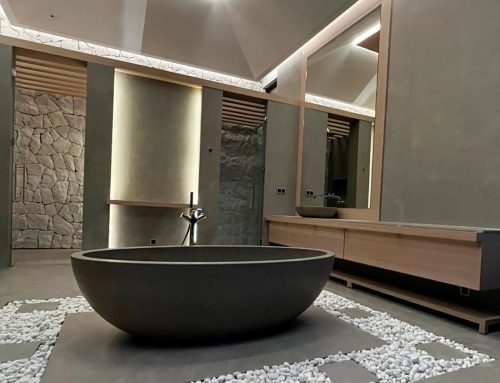Eduardo Gayoso, Façade Product Manager at TINO since 2018, is a Building Engineer and Architect with a Master of Architecture in Lightweight Façades. Since he entered the façade sector in 2014 at HILTI, he has not stopped specializing in this field, as he considers himself an enthusiast of the world of the architectural envelope, passionate about its new materials, technologies, and construction solutions.
Today’s interviewee is a contributor to technical publications such as the Ventilated Facade Manual produced by the Spanish Association of Light Facade and Window Manufacturers and a lecturer in the Master’s Degree in Light Facades (UPV/EHU).
Gayoso values the didactic dimension to a great extent, both for his continuous training and personal learning in the world of architectural enclosures and for his collaborations in transmitting knowledge.
What is Stonesize?
Stonesize is a solution of ultra-lightweight panels of giant format with 100% natural stone finish. All this is possible by combining a thin layer of natural stone with a back layer of an ultra-light, high-strength material such as honeycomb.
Thanks to the characteristics of Stonesize, these panels present completely innovative and differentiating possibilities in the field of architecture and interior design, resulting in spectacular designs that were impossible to achieve before.
Why is a key the use of honeycomb?
Honeycomb panels are the best option to achieve exceptional rigidity in an ultra-light way. These panels are capable of achieving high resistance using minimum amounts of material, which translates into a very reduced weight.
How do these panels work?

Honeycomb panels work like a sandwich. Compared to monolithic panels, sandwich panels divide the material into two different skins that are separated from the axis of the material section. The result is an increase in the geometric rigidity (inertia) of the panel, without increased material consumption.
These two thin skins are composed of high resistance materials, such as aluminum or fiberglass impregnated with epoxy resin.
On the other hand, what keeps these skins separate is the aluminum honeycomb core. This hexagonal geometry allows the minimum consumption of materials since the hexagon is the geometric figure that enables the surface to be divided into equal cells with the smallest possible perimeter.
This high rigidity of the honeycomb panel provides the stone with just the necessary mechanical complement, since natural stone is a fragile material, with a low resistance to traction (for this reason traditionally high thicknesses was needed to achieve excellent performance, generating solutions which were too heavy).
Thus, when faced with bending stress (caused for example by a surface wind load on a facade panel), the stone will not suffer, as the back panel will provide the necessary rigidity to the entire Stonesize panel.
What can Stonesize bring to the world of lightweight natural stone facades?
I would say that Stonesize opens up a new world of possibilities when it comes to designing and creating unique facades for the following reasons:
- The giant format is made possible by Stonesize, because historically the large format was very limited by the weight of the stone and its handling.
- A superb ultra-light mechanical performance is achieved with very little thickness
- Natural stone leaves behind its quality of fragile and heterogeneous material to become a highly technical material with great security against impact. Since even if it is broken, it will not suffer a breakage, because the stone will be held by the panel itself, also if it has been fractured. It means that it can form part of facades with very high mechanical requirements (tall towers with strong winds) or other risky applications (roofs, etc.). This high resistance also reduces the risk of breakage to a minimum, not only during installation but also during handling and transport.

As a consequence of these advantages, Stonesize can generate unique large-format facades, not only as a ventilated facade solution but also in prefabricated elements and curtain walls. For all these reasons, architects can give free rein to their creativity.
Does it add advantages for energy saving?
The Stonesize ventilated façade solution offers protection of the interior cladding from direct rain and wind.
It improves the energy efficiency of the buildings, prevents dampness or overheating in the enclosure, avoids thermal bridges, and increases the thermal inertia of the enclosure. It also improves the acoustic insulation.
The cladding is also not affected by the expansion and contraction resulting from thermal changes. The free movement is allowed due to the expansion of both the substructure and the cladding.
But wasn’t all this already solved with porcelain tile?
Although porcelain tile has come to be produced industrially in large format, what it will never achieve is to become a natural material.
Each piece of natural stone is unique. The uniqueness and expressiveness conveyed by a marble slab are unparalleled. Moreover, it is impossible for the drawing of its veins or gaps to be repeated serially as necessarily occurs in the artificial textures printed on other panels.
Marble, onyx, limestone, and quartzite, among others, are the result of the whims of nature, not created by man. The mass production of synthetic materials such as porcelain can never reach the magic of nature.
And in terms of weight, are there differences with porcelain?

Until now, the great advantage of porcelain was that it generated pieces for the large format with a low weight/m2, easy to handle and install. That was an unreachable horizon for natural stone, but everything changed with the appearance of the Stonesize panel, which manages to generate giant format panels with even lower weights (20 kg/m2).
What level of support or service can TINO offer in the world of facades?
At TINO Natural Stone we are not just suppliers of stone. Our trajectory of more than 35 years of experience with more than a thousand projects undertaken all over the world guarantees TINO being a real project partner.
In that sense, from TINO we can work not only in the production and supply of the panel in any format or particular piece but also in the substructure solutions to fix it and the engineering.
Also, the installation is an aspect that can be studied according to the type of project and location, so we invite any technician or owner to share with us from the beginning their concerns to work side by side towards the best solution.
Where can I find more information about Stonesize façade panels?
To learn more about construction details, substructure system, installation process or how Stonesize facade panels meet the challenges of dimensional changes or fire resistance you can find more in the facade section: https://stonesizepanels.com/es/ligero-piedra-honeycomb-fachadas
And for questions that may remain unanswered regarding Stonesize facades you can contact me directly:
egayoso@tino.es / (+34) 669 447 687
***









